In an entirely unsurprising turn of events, I’ve been very lax about posting anything on here for several months now. As with most problems in graduate school, I’ll attribute it equally to writer’s block, lack of inspiration, and overscheduling. Things have been quite hectic for the past few months – a few days in Switzerland, the holiday season, AIAA SciTech, a trip to visit family in the U.K., 13 outreach events, and who knows what else on top of coursework and research.
However, things have quieted down a fair amount now that summer is here, and I kicked things off in the best way possible today – with a new flying adventure! I was out at Kokomo Municipal (KOKK) finishing up my usual aerobatic training in the Super Decathlon when a beautiful Fairchild PT-26 landed. I made some comment to my instructor about wanting to fly one someday; he walked up to the pilot, exchanged a few words, and before I knew it I was whizzing over the fields of northern Indiana in an open-cockpit dream of yesteryear.
The PT-26 (a derivative of the PT-19) was a stalwart of the USAAF in World War II. Perhaps not quite as iconic as its contemporary, the legendary Stearman (PT-17), the -26 was actually employed in greater numbers by the USAAF to train new pilots. It fell into the first tier of the standard training regimen, the primary training phase (hence ‘PT’), serving as the first mount of the majority of Army pilots. A robust design developed in the late 1930s to satisfy demand for training aircraft, the plane has mixed plywood and steel tube construction typical of the era. Interestingly, the plane’s plywood wings – or rather, the problems they presented with regards to delamination and warping – were likely a key factor in pushing the Air Corps to advocate for all-metal designs in future aircraft. Nonetheless, the plane’s stout construction, wide landing gear, and docile handling characteristics made it a perfect trainer, and after seeing extensive service with the USAAF, the RAF, and the RCAF, many survive today in private hands.
The plane I flew today is a PT-26A, manufactured by Fleet Aircraft of Canada (later famous for the Canuck trainer) from 1943. Interestingly, it is in an open-cockpit configuration; a bit ironic considering that the PT-26 was a closed-cockpit variant of the PT-19. This plane has the upgraded Ranger L-440-3 engine (an inverted inline six) developing 200 HP.
Clambering in is easy for a spry youth and probably much harder for anyone else – feet on the narrow wingwalks, hands on the cockpit coaming, and it’s a quick vault over the side to plop your feet down on something solid (the seat is always a good bet). Bit of a wriggle to get your feet on the floor and your bum in the chair, then you can do up the harness straps and get yourself situated. The big novelty value for me here is the “lollipop” – the manual fuel pump needed to start the engine when cold and/or drained. Everything else is pretty much as expected – basic instruments, stick on the floor and engine controls on the left wall. As with most older planes, there is a delightfully spartan simplicity to the cockpit.
The engine coughs to life quite easily and runs smoothly as only a six-cylinder can. Taxiing is straightforward as long as you keep your momentum up – but if things get really dire, there are toe brakes (thank goodness). At around 2500 lbs max gross, the plane is not that much heavier than a fully-loaded Warrior or Skyhawk, but sitting so high off the ground makes the plane feel a good deal bigger. It certainly feels like a behemoth when you compare it to civilian trainers of the same vintage such as the Cub and the Champ. The owner handled takeoff and climbout, which gave me extra time to focus on the thrill of the machine itself and the exhilaration of flying open-cockpit. At around 2000 feet MSL he handed me the controls – what a revelation! The plane feels big on the ground, but in the sky it flies with the grace and agility of a ballerina. It’s far more direct than a plane its size has any right to be – like a well-designed bicycle, you merely suggest what you want to do and the plane finishes the idea for you. Coordination is especially important (the whole airframe hums if you don’t balance the rudder properly) but if you keep your feet alive and the ball in the middle, she carves through the air like a figure skater on ice. After some S-turns and turns around a point, I tried a few stalls. Even in coordinated flight, a wing seems to drop, but it’s easily picked up with the rudder and the maneuver is overall a non-event. Steep turns were good fun, though rolling 120 degrees through a change of turn required much more rudder than I had expected. Some lazy wingovers were the perfect way to cap off a transcendent flight. The plane’s owner talked me through the approach and landing, and both were exactly as expected. Bring it down the glideslope at around 85 indicated, ease power back and level off, and set her down on the mains. The usual rudder dance on the pedals, and before you know it you’ve fallen out of the sky with surprising grace.
Less graceful by far was our struggle to get the plane back to the ramp with a slightly sticky tailwheel – this involved a brief taxi into the grass, followed by an extended period of pushing and pulling by yours truly to try and free the beast from the loose, sandy soil into which the wheels had dug. This shattered all of my illusions about the -26 being light and docile – I now feel intimately acquainted with each and every one of those 2500 lbs. Still, with much heaving we were able to bring the plane around and return to the ramp.
This brief flight was one of the very best I’ve yet had. Flying old warbirds remains one of my biggest aviation dreams, and I am immensely grateful for the opportunity I had today to dip my toe into the water. I quite earnestly hope that I find more opportunities to build my warbird experiences in the future.
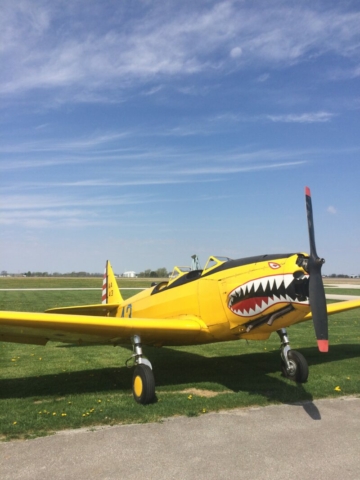
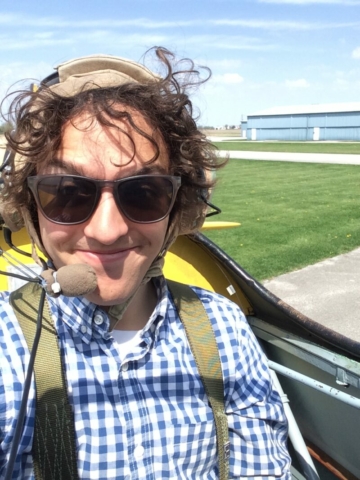
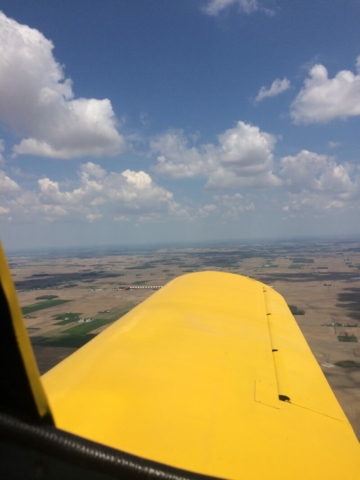
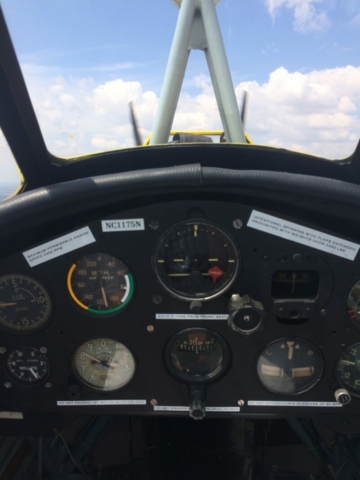
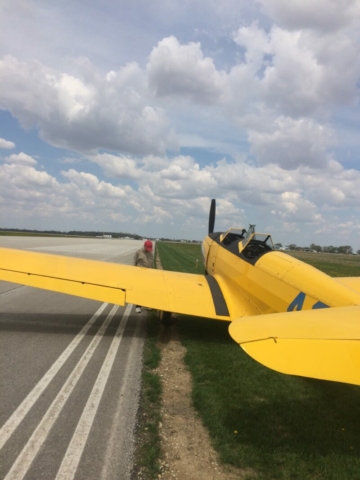
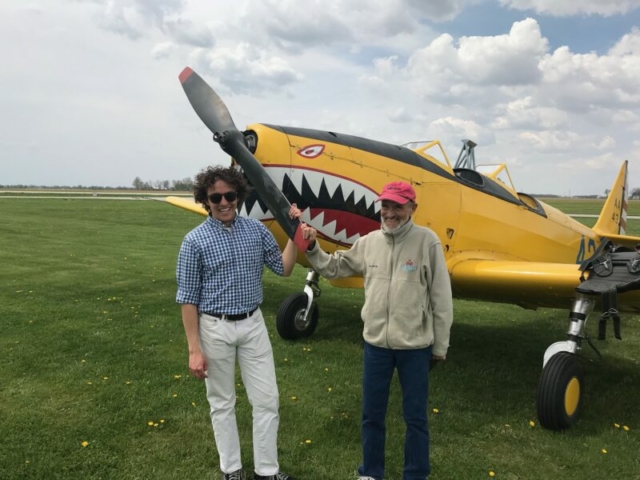
0 Comments